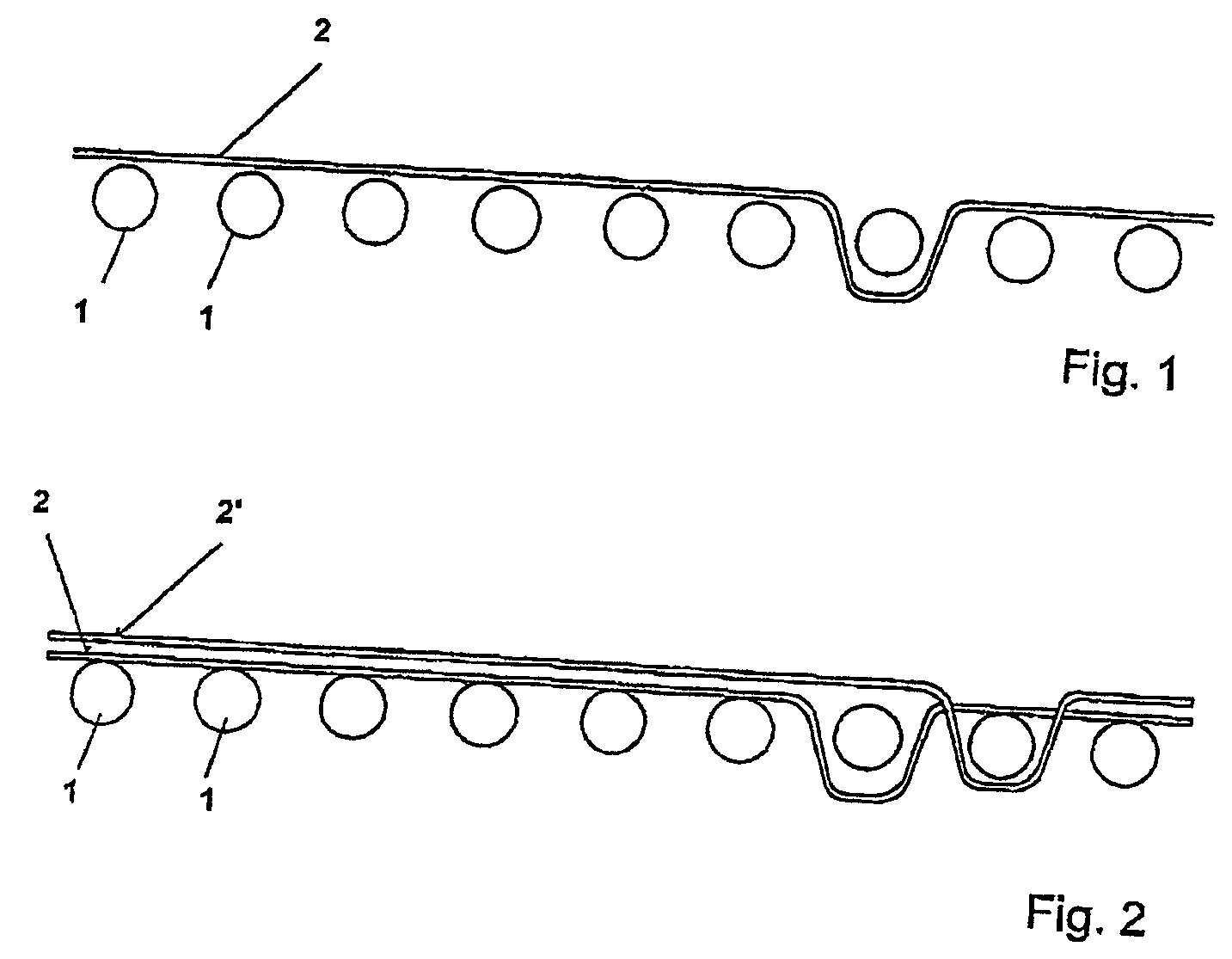Method and unit for the production of images with high resolution in jacquard fabric
a production method and fabric technology, applied in the field of high-resolution production of images in jacquard fabrics, can solve the problems of inability to achieve the exact reproduction of illustrations in the ground colors of fabric in the ground colors by means of textile weft threads, inability to carry out color mixing, and inability to achieve color mixing. deficient, so as to achieve the effect of reducing the number of fabrics and simplifying the weaving program
- Summary
- Abstract
- Description
- Claims
- Application Information
AI Technical Summary
Benefits of technology
Problems solved by technology
Method used
Image
Examples
Embodiment Construction
[0045]The method according to the invention comprises an initial phase of color scanning of any desired image which may be of any type, without any restriction in terms of typology and of dimensions.
[0046]The image read in this way is visualized by video by means of an appreciable number of colors: said number of colors is in close interrelationship with the performance of the hardware system used and, consequently, with the configuration of the latter.
[0047]At this point, the execution of a selection of the number of necessary colors is commenced, specifically directly from the video image or by a selection of the colors within the total spectrum of the visible field of colors, an infinite selection of color shades and variants consequently being offered.
[0048]In practice, the worker selects the number of basic colors of the weft and of the warp which he would like to use during weaving, that is to say the number of basic colors corresponding to the number of warp and weft threads ...
PUM
 Login to View More
Login to View More Abstract
Description
Claims
Application Information
 Login to View More
Login to View More - R&D
- Intellectual Property
- Life Sciences
- Materials
- Tech Scout
- Unparalleled Data Quality
- Higher Quality Content
- 60% Fewer Hallucinations
Browse by: Latest US Patents, China's latest patents, Technical Efficacy Thesaurus, Application Domain, Technology Topic, Popular Technical Reports.
© 2025 PatSnap. All rights reserved.Legal|Privacy policy|Modern Slavery Act Transparency Statement|Sitemap|About US| Contact US: help@patsnap.com



